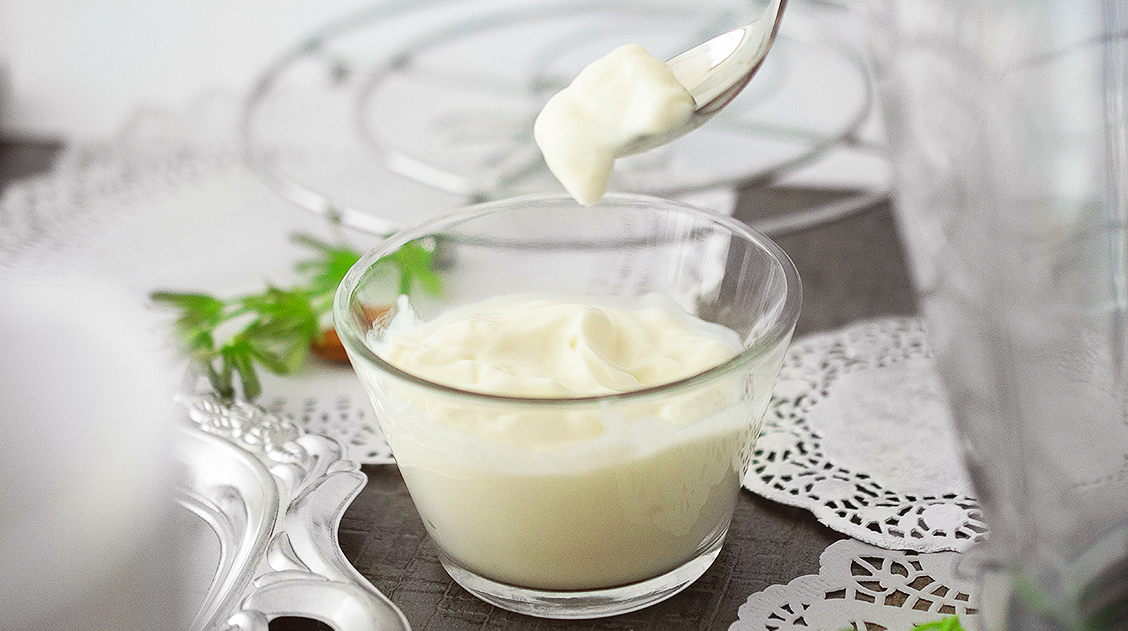
New Way to Reduce Fat in Mayonnaise
Mayonnaise. It’s consumed worldwide. And it’s incredibly popular, with the global mayonnaise market expected to reach $15.7 billion by 2028. Now, new research reveals an innovative way to reduce the fat content of mayo, without compromising on the qualities of the regular version.
It’s worth exploring where this popular sauce originated, the various types out there, and what prompted the creation of a low-fat version.
Where did mayonnaise come from?
Mayonnaise is widely believed to have been discovered in Mahón, the capital of Menorca. Once called ‘mahonesa’, it has since evolved into ‘mayonesa’ in Spanish.
It is believed that the Duc de Richelieu, a member of the French nobility, invaded Mahón in 1756 and brought mayonnaise back to the Palace of Versailles, where it became incredibly popular.
Marie-Antoine Carême, a famous chef at the time, then took the basic egg and oil mix and blended it into an emulsion. This is the mayo we know today.
What types are there?
There are many unique varieties.
Firstly, it can be flavored. Garlic, lemon, chili, and bacon are all varieties of flavored mayonnaise. They are sold commercially and can also be made at home.
However, fat-free mayonnaise is the most common deviation from the standard. The typical way to make it is to reduce the oil content and replace it with water and thickeners such as xanthan gum and guar gum.
As a result of these major changes, low-fat mayonnaise can differ from the regular version substantially. This can mean differences in ‘flavor, texture, appearance, and color’.
Luckily, we may now be able to maintain the attributes of the regular mayo without compromising on the low-fat benefits.
Is mayonnaise healthy?
Although it contains many important nutrients, such as vitamins E and K, it is high in calories, saturated fat, and cholesterol. Because of this, many health officials recommend eating it in moderation.
Vegan mayonnaise
There’s another option for those wanting to cut fat out of their mayonnaise consumption. Vegan mayonnaise skips out on eggs for starch.
Eggs contain a lot of the cholesterol and fat present in the sauce. So, this makes going vegan a good option for those wanting a healthier alternative.
But there are limitations to vegan mayo. It still contains oil, which is responsible for the majority of the fat content.
Furthermore, the inclusion of eggs is critical for taste and color, meaning that vegan mayonnaise can be lacking for some.
Thankfully, a research study published in Processes reveals a new way to reduce the fat content of mayonnaise.
The authors of this study suggest the use of hydrocolloids extracted from white yams (Dioscorea rotundata) to maintain the emulsion’s consistency. This presents a healthier, natural alternative to some other commonly used thickeners.
In the study, the authors carefully extracted the hydrocolloids from the white yams and added them to the mixture, with optimism based on prior research.
A new way to thicken low-fat mayo
Overall, adding hydrocolloids to mayonnaise was highly successful. It was slightly more yellow than the regular version, but the emulsion was stable, and other important qualities, such as taste and texture, were retained.
This is significant as it could improve global health and the efficiency of the food industry.
The authors concluded by asserting, ‘This work could facilitate the design of reduced-fat mayonnaise as a novel health product to be developed on an industrial scale.’.
What’s next for mayonnaise?
Research continues to find new ways to improve situations, practices, and even foodstuffs. As we continue to publish research from scholars in diverse disciplines, we anticipate even more ways to improve mayo.










